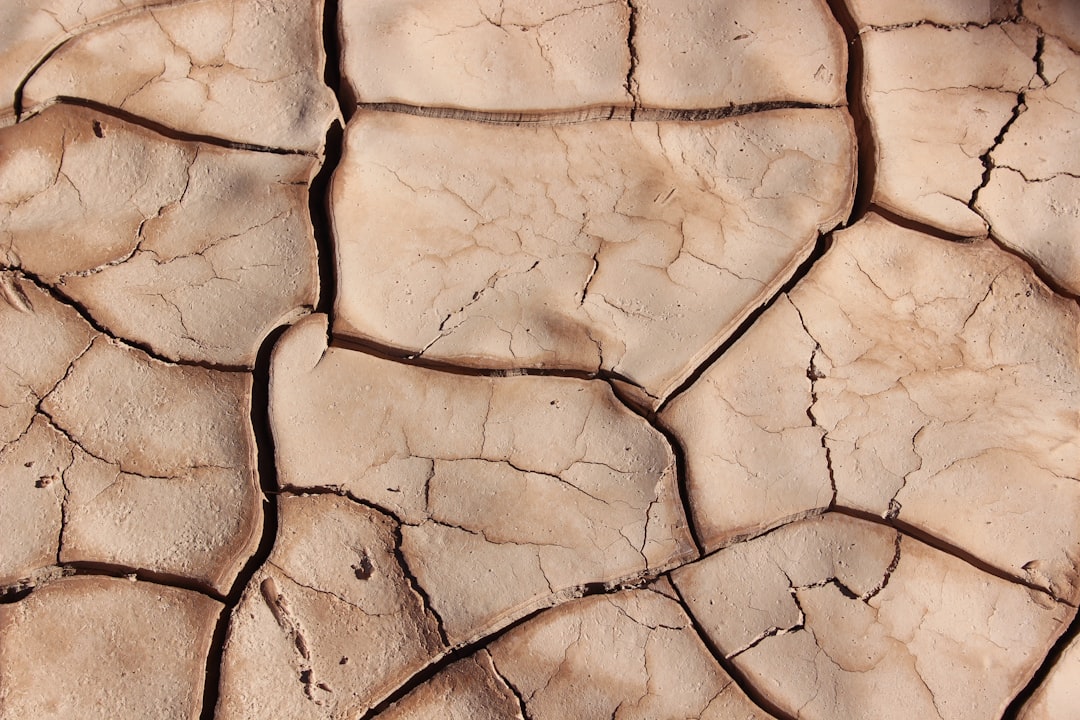As the world focuses its energy and resources on the COVID-19 pandemic, a different type of plague is going unnoticed in the plains of East Africa. Hundreds of billions of locusts, a type of grasshopper that is usually solitary, are gathering in swarms the size of major cities and devastating crops around the region. Locust swarms have been a cause of famine and human migration since prehistory, and this year’s plague seems to be no exception. This year’s outbreak is the worst that the region has seen in decades, similar in magnitude to the devastating outbreak that spiraled out of control from 1948 to 1963. Experts estimate that the number of locusts could increase 500 times by June, which could have catastrophic effects on the livelihood of African subsistence farmers and the entire region’s food supply.
Desert locusts are voracious insects that feed primarily off of carbohydrates, such as grains. The insects can travel 90 miles a day to seek vegetation for fuel. Once they have decimated their environment, they take off in swarms towards new fields to feed from. Not only do they consume crops in the field, but they also decimate food in storage.
Their rapid reproduction and swarming is triggered by rain, but they survive very well in dry environments. In fact, the desert locust is one of the only grasshopper species that has a tendency to become gregarious. Because they live in dry environments, locusts take advantage of heavy rains to breed rapidly until the climate dries up again. These usually solitary insects are biologically conditioned to gather in this way when they have sufficiently reproduced in order to protect themselves from predators on their journeys for food. The consequences of a swarm of this size are enormous. A swarm of a single square kilometer can eat as much food in a day as do 35,000 adults. One of the current swarms was reported to measure up to 40 by 60 kilometers, which gives it the potential to devastate enough food to feed 6 percent of the population of East Africa each day, or the equivalent of 84 million adults.

While a plague of this magnitude is always devastating, the timing of this one is particularly problematic for two key reasons. First, the coronavirus pandemic is limiting the international community’s ability to focus their attention and, critically, humanitarian aid to the outbreak. The inability for experts to travel to the region and train locals to run a pesticide spraying operation largely limits the possibility of containing the plague; South Sudan and Uganda will be particularly affected, since they have not experienced locust swarms of this magnitude in recent memory. The threat of a famine caused by crop decimation is looming and will likely be worsened by the economic instability resulting from the global coronavirus crisis. Second, independent of the health crisis, the plague is spreading during one of the worst times of the year: planting and rain season. Locusts are currently consuming almost all seedlings, which will slash agricultural yields. The new generation of locusts is expected to start hatching in May and form swarms by the end of June, which coincides with the expected harvest of crops planted during the rainy season. According to the UN’s Food and Agriculture Organization, the situation is “extremely alarming,” and poses an unprecedented threat to food security and livelihoods of people across Africa.
The Usual Suspect: Climate Change and Agricultural Shifts
The occurrence of this outbreak is not unexpected, as it is one of the many natural consequences of unusual weather events. The outbreak began in Oman’s desert in 2018 after two cyclones in May and October brought heavy rains. Rain brings fresh vegetation and humidity, thus creating the ideal conditions for locusts to breed rapidly. The May cyclone alone brought enough water for vegetation to grow for six months, which is enough time for two generations of locusts to develop. Given that the number of insects increases by about 20 times in each generation, the two storms were ideal for the locust population to explode. Because of the remote location of the original outbreak, it went undetected for months, making it now increasingly hard to control. Somalia and Ethiopia, countries proximate to the original breakout, experienced unusually heavy rains in March, further accelerating the growth of the locust swarm in recent months. At this point, if no action is taken, the locusts will keep spreading until they run out of fuel, which would be when the region is void of crops.
What is the cause of such a dramatic evolution? Climate change appears to be the major culprit behind the locusts' rapid rise. The risk of locust swarms increases as the region’s proximate oceans warm. Warm water causes the cyclones that create the conditions for a massive locust breeding season. Eight cyclones took place over the Indian Ocean in 2019, a drastic increase from the usual zero to one cyclone a year.
Yet the locust plague is just the tip of the iceberg when it comes to the devastating effects of climate change on the region. The outbreak is symptomatic of a larger phenomenon: the African continent, its livelihood, its agriculture, and its ecosystems are extremely vulnerable to the looming effects of climate change. The damage is already widespread and is only beginning.
While extreme, unpredictable weather events are an important feature of global warming, desertification is perhaps the most imminent threat to agriculture in the sub-Saharan region. In 2019, East Africa experienced the driest season ever recorded during the traditional rainy season (March to May). Planting delays and severe rainfall deficits caused irreversible damage to the vegetation environment across Kenya and Somalia, resulting in crop yields falling 50 to 60 percent below their historical average for a second consecutive season.

Desertification has also caused water availability in large basins such as Lake Chad and the Niger to decrease by nearly 60 percent. Lake Chad is an important source of water for Chad, Cameroon, Niger, and Nigeria, so its dramatic shrinkage in recent decades has posed severe challenges to those countries. Nigeria has been hit especially hard by desertification around the lake, as temperatures in the country have increased by 1.1°C over 105 years. Rainfall has decreased by 81 millimeters, resulting in the drying up of surface waters over time.
In addition to the devastating consequences of desertification on the Nigerian ecosystem, such as the disappearance of endangered species that relied on the lake’s water, this change has dramatic impacts on humans. The surrounding farmlands and villages are becoming barren, causing massive migration of farmers and herdsmen to more fertile land. Widespread internal displacement causes thousands of people to lose their homes, their villages, their jobs and land, which often leads to internal conflict over limited resources. In addition, international conflicts have emerged between countries bordering the lake over rights of access to the remaining water.
Why is Africa facing a disproportionate climate-related burden?
The African continent is faced with a bitter paradox. Although Africa is the continent that has least contributed to global warming, sub-Saharan Africa is among the regions that will suffer first and the most severely. While the region accounts for only two to three percent of all greenhouse gas emissions, sub-Saharan Africa is already bearing a disproportionate burden compared to other regions of the world and is expected to warm up 1.5 times faster than the global average. The biggest direct climate-related challenges today are desertification and flooding, which have already caused a decrease in food production, destruction of livelihoods, the spread of waterborne or other climate-related diseases (like malaria as mosquitoes tend to benefit from warmer temperatures), changes in natural ecosystems, and the inundation of coastal zones.

There are additional factors that make Africa more vulnerable to this disproportionate burden. First, African society and livelihoods are very closely related to climate. Most of the population is dependent on agriculture and therefore rainfall for survival, as many subsistence farmers rely on their production to feed their families. Others depend on farming for their source of income. For example, more than 80 percent of the active adult population of Tanzania works in agriculture or related industries. Agriculture accounts for half of Tanzania’s GDP and constitutes more than 90 percent of its exports revenue. The critical role of agriculture is largely generalizable across the region.
Second, many African countries face extreme poverty, resulting in little flexibility to adapt to climate disasters and food shortages at both the individual and collective level. Without urgent action, the World Bank estimates that the impacts of climate change could push an additional 100 million Africans into poverty by 2030. Additionally, the food insecurity resulting from declining agricultural productivity will lead to increasing stunting and malnutrition, especially since the population of sub-Saharan Africa is expected to more than double by then.
Agricultural shifts in the region due to climate change are therefore threatening economic opportunities for the vast majority of Africans who work in the agricultural sector and declining rates of food production, which result in regional food insecurity. By contrast, internal displacement and forced migration as a result of climate change related phenomena threaten to destabilize not just the region but the entire world.
Internal Displacement and Forced Migration: Consequences of Agricultural Shifts and Weather-Related Disasters
Climate change and weather-related disasters cause 17.2 million new people each year to be internally displaced in the world, from which more than 30 percent are in sub-Saharan Africa. Nigeria and Somalia are the hardest hit countries on the African continent. Internal displacement means more than simply moving. Climate refugees lose their homes and possessions in addition to being separated from their ancestral lands. Floods and wildfires can destroy all of a family’s belongings and take away lives.
In less extreme cases, for example, desertification, water shortages, and unreliable rainfall make agriculture impossible. As a result, many people must leave their homes and families in search of work. Since agriculture employs two in three people in sub-Saharan Africa and accounts for a third of its GDP, this phenomenon is likely to affect a large part of the African population. However, in many cases, economic opportunities are limited in cities due to the large inflow of other climate refugees also in search of work. Internal migration, with all of the emotional and practical hardships it brings, rarely brings actual economic relief.

When moving to nearby cities or neighboring countries ends up being insufficient, many displaced people, mostly young men, leave their country or continent to find opportunities in developed countries. These climate refugees are joining the existing migration waves of people affected by conflict and misery, seeking temporary work in European countries to send money back to their families. One study shows that climate change could lead to one million migrants entering the European Union a year by 2100. However, refugees continue to face dangerous challenges and miserable conditions on their journey.
An important issue today is that the concept of “climate refugees” does not yet exist in international law. People who are forced to leave their home country because of weather-related disasters or poverty and unemployment caused by climate change have no special refugee distinction or rights to protect them in countries like those in the European Union. Tensions between Western and non-Western countries have been rising as a result, especially given Western countries' massive pollution rates relative to countries in regions like sub-Saharan Africa.
Such issues bring into question Western responsibility in the ongoing shifts affecting sub-Saharan Africa. We ought not view phenomena like the massive locust swarms as isolated events, but rather as part of a series of climate disasters that are bound to continue for years to come. It is representative of the dramatic agricultural shift that is threatening African livelihoods and sheds light on the disproportionate plight that the region faces as a consequence of global warming. Whether from losses of economic opportunity or the decline in stocks of staple crops, many Africans are finding it increasingly hard to feed their families. Financial instability and hunger coupled with worsening weather conditions and desertification are pushing families to leave their barren homes and unemployed youth to seek jobs elsewhere, first in rural areas, then in neighboring countries, and finally in the West. None of these destinations are devoid of risks as conflict and abuse are an unavoidable consequence of forced migration.
What happens in other regions of the world is not unrelated to global challenges that the international community is working to overcome. Events that seem isolated, like the sub-Saharan locust swarms, are likely to lead to devastating global consequences. Local solutions are insufficient in this new era. The rising threat of climate change demands new international legal and political frameworks, to deal with the growing impacts of desertification, agricultural challenges, and forced migrations on a global scale.





